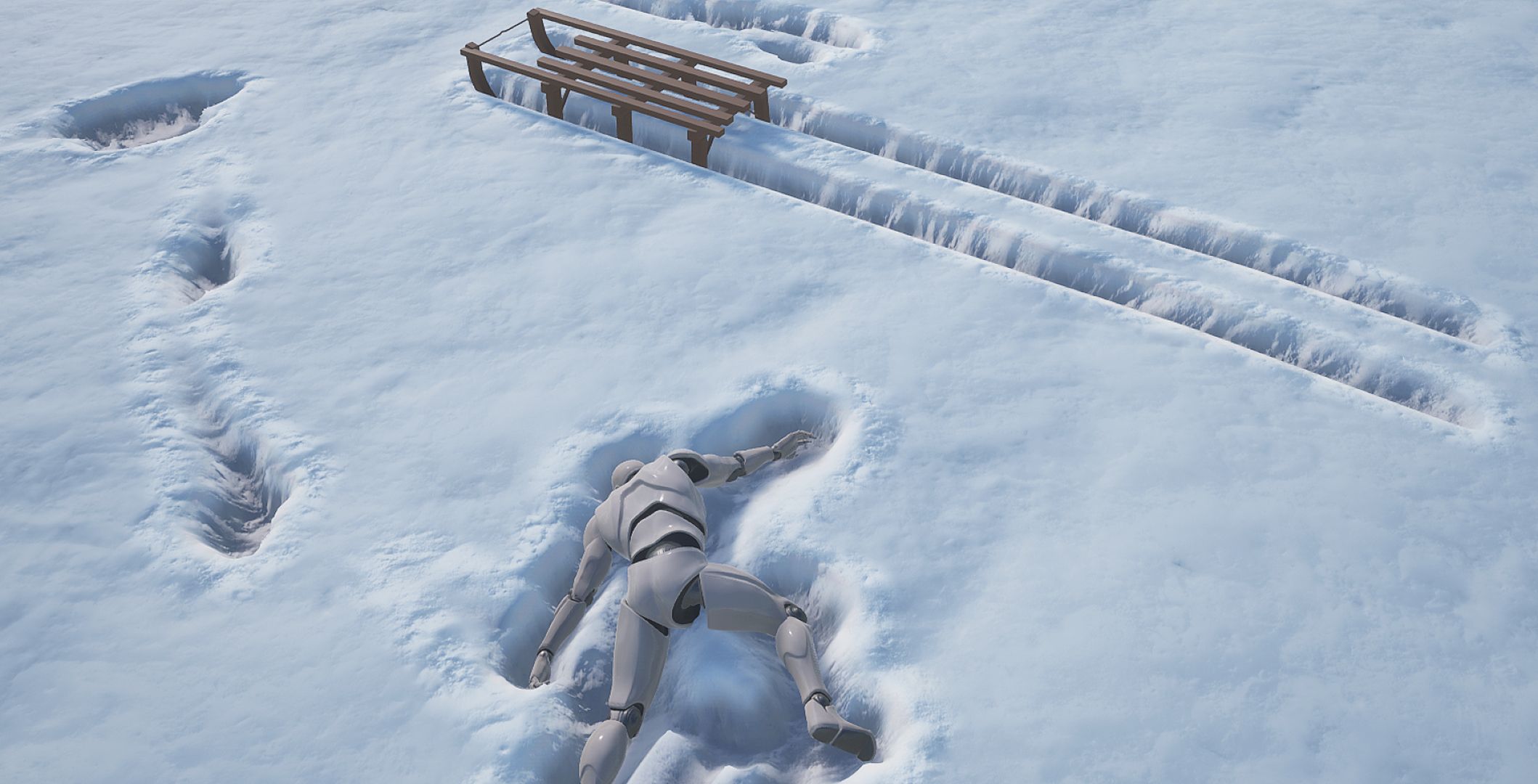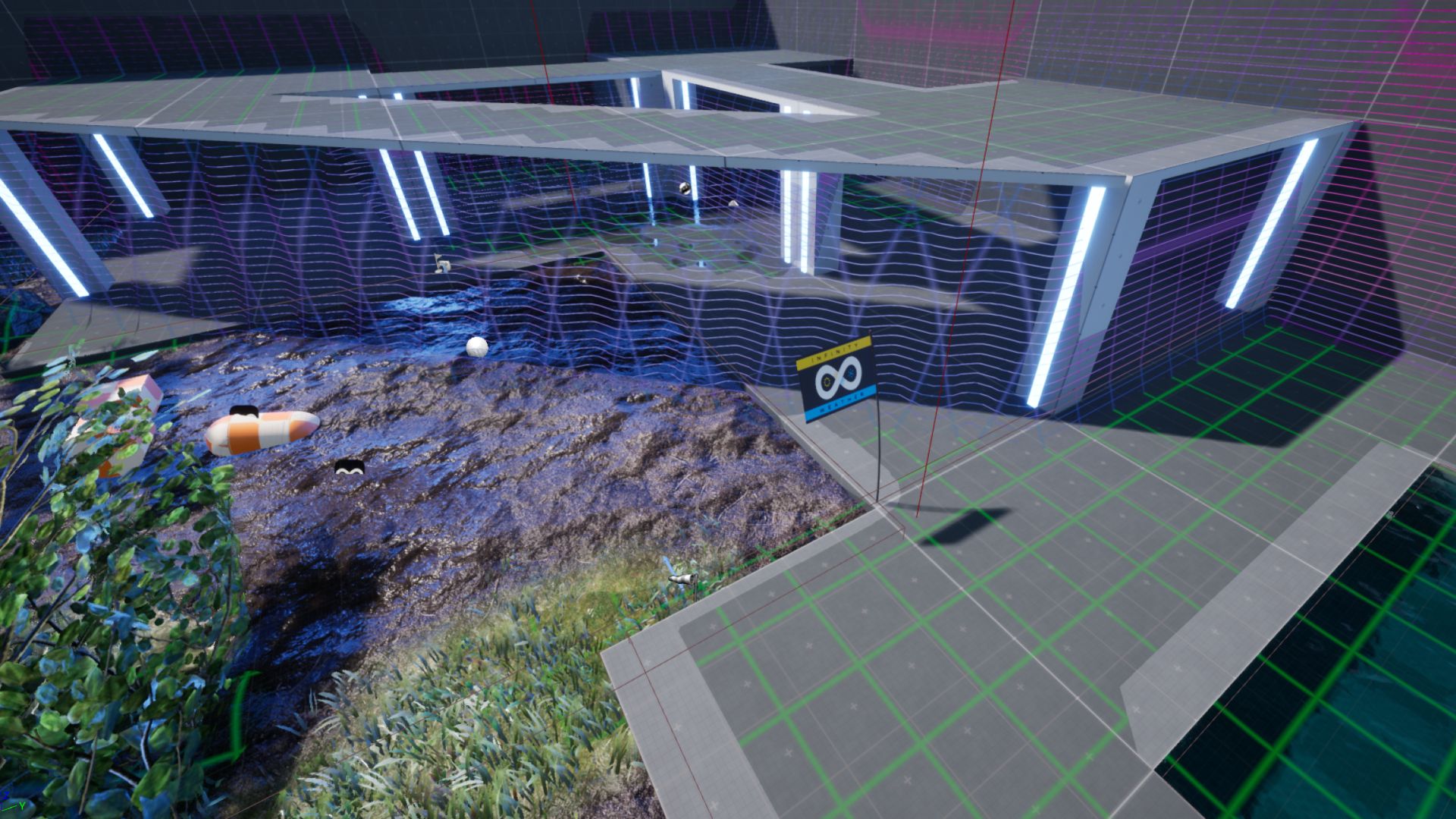
Infinity Weather 2.0 brings Unreal Engine 5 support and improves performance, stability, memory management, and many new system capabilities.
The example demo maps and the new executable demo have been renewed and updated. The Infinity Weather 2 update applies to Unreal Engine versions 4.26 – 5.3. Read the Package Update Process before downloading the update. Please leave a review of my product if you like it, appreciate the update, and want to see more in the future. 🙂
Sky System
Infinity Weather 2.0 introduces an entirely new sky system, which is simultaneously the most innovative feature of this product.


In the new folder, InfinityWeather/Sky, the following classes were added:
- BP_InfinitySky – is a combination of effects related to sky rendering, such as volumetric clouds, atmosphere, fog, background clouds, celestials like sun, moon, and star, and post-process exposure.
- BP_InfinitySolarSystem – The sky system integrates with the day and night system based on the calendar and location on Earth. It requires the build-in engine Sun POsition Calculator plugin, so make sure it is enabled in your project:

Just a normal(map) moon. I’ve also implemented a customizable secondary layer of clouds. pic.twitter.com/PpR4aFCZib
— Krystian Komisarek (@ImaginaryBlend) November 21, 2023
- BP_InfinityLightning – It involves generating the effect of illuminating clouds at the location of lightning. It randomizes lightning within a specified area, allowing for periodic activation. Additionally, the system provides BP_InfinityLightningMaskActor, which defines a mask that can cut off the light effect inside the buildings.
It seems like an emissive output is doing the job. I love the way volumetric clouds work in #UnrealEngine. The lightning bolt effect is from my Lightning Fast asset.
BTW, the Infinity Weather update is ready and awaiting approval! 🙂 pic.twitter.com/zC13LiqNDF— Krystian Komisarek (@ImaginaryBlend) January 17, 2024
- BP_InfinityVolumetricClouds – A separate volumetric cloud system that can be easily integrated with every project without destroying other lightning settings on the map. It shipped with 20 predefined cloud presets that can be easily mixed. Volumetric cloud control was simplified to a few basic parameters (Coverage, Slope, Density, Erode, Softness, Light) that can model many different types of clouds.

EUW_InfinityCloudsEditor – The volumetric cloud editor enables the blending of sample presets and the creation of new ones
It definitely took me too long, but I finally found the ‘right’ parameters for volumetric clouds. The Infinity Weather update, which will also include support for UE5, is coming soon 🙂 pic.twitter.com/PI0P99oxwt
— Krystian Komisarek (@ImaginaryBlend) November 8, 2023
The new Infinity Weather sky system introduces an intriguing feature not previously encountered in similar tools. We are referring to the integration with the Sequencer, which allows for cloud control through a timeline with the ability to scroll through time and adjust cloud transition effects.
I’ve successfully gained control over the sky in the sequencer. The configuration could be more intuitive but it’s still better than nothing. 🙂 #UnrealEngine pic.twitter.com/2sCVD9V9QY
— Krystian Komisarek (@ImaginaryBlend) January 5, 2024
Displacements and Tesselation
With the introduction of Unreal Engine 5, the engine ceased to support tessellation, rendering the displacement mapping effect unsupported.
As a result, users did not have access to this feature in subsequent engine versions. Finally, I decided to make a change and revive this project.
Tessellation based on Nanite is not yet stable enough and is ready to be the foundation for games. Therefore, the latest version of Infinity Weather will rely on Parallax Occlusion. This method is intended to be available during the transitional period. Over time, support for terrain deformation using Nanite will be introduced; however, this update does not aim to do so.

An additional plus is that a renewed displacement system supports sequencer preview, which makes work on cutscenes predictable and manageable.
Precipitation system
This update brings many changes to the precipitation system and the implementation of atmospheric effects. The system was recreated using Niagara particles and shifted computations to the GPU, giving better performance, saving memory, and more visual control.
I’ve also upgraded the occlusion map rendering and introduced the HeightMapComponent system from Fluid Flux for rendering scenes into height maps. It’s got handy tools for filtering out invisible stuff. The refreshed occlusion capture now supports displacement and automatic real-time updates, making it work well across large maps.

Summary
This update includes many changes, but not all issues have been resolved, so I recommend reviewing the following list before making a purchase and update.
- The previous version of the package supported vehicles; unfortunately, during the transition to a new engine, the old vehicle system based on PhysX was removed from the engine, which requires rewriting part of the functionality for the new one. All vehicle-related systems still function, but there is no example yet. I plan to recreate it in the future.
- Weather control from the sequencer includes only basic functionalities of the sky. If there is a need for control over a more significant number of parameters, please contact us.
- The Displacement system is based on parallax occlusion with several additional optimizations, which may result in an unsatisfactory effect at low camera angles. Therefore, I recommend checking the demo before making a purchase.
- Experimental volcano smoke and tornado based on tessellation are not supported anymore.

